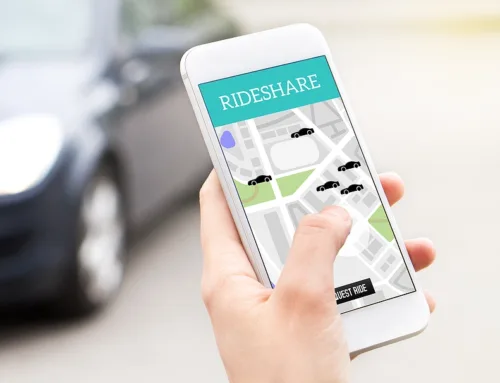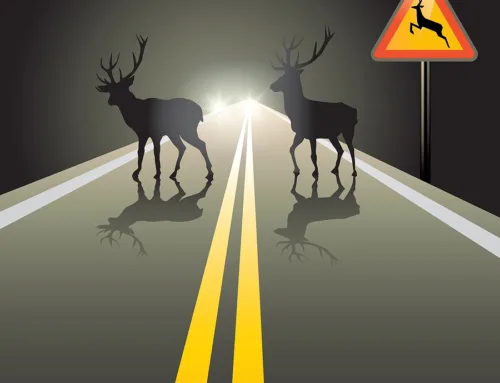A major selling point of many of the new cars on the market today is the advanced suite of driver assistance features designed to improve the safety and convenience of operating these vehicles. These features, while still requiring the active engagement of the vehicle’s driver at all times, exist on a continuum defined by the Society of Automotive Engineers (SAE) of “Levels of Automated Driving.” Specifically, the level of driver assistance technology that exists at SAE Level 2 – currently the highest level of driving automation legal on America’s roads outside of strictly-monitored testing – involves features that both assist in steering and in the acceleration and braking of the vehicle; for instance, a combination of adaptive cruise control and lane keeping assistance. The use of either of these features without the other would bring the vehicle down to SAE Level 1, while at SAE level 3 the vehicle itself is in full control of its own operation but the human driver may be required to retake control at the request of the automated system.
 While these technologies are designed to make the experience of driving a safer one, these systems remain relatively new, and regulatory agencies are keen to understand whether the level of trust being placed on a vehicle’s computer system is warranted. Humans are indisputably prone to human error, to which the long history of collisions and fatalities since the introduction of the automobile can attest, but it doesn’t necessarily follow that giving even limited control of a car to a computer program designed by those same error-prone humans is actually safer.
While these technologies are designed to make the experience of driving a safer one, these systems remain relatively new, and regulatory agencies are keen to understand whether the level of trust being placed on a vehicle’s computer system is warranted. Humans are indisputably prone to human error, to which the long history of collisions and fatalities since the introduction of the automobile can attest, but it doesn’t necessarily follow that giving even limited control of a car to a computer program designed by those same error-prone humans is actually safer.
That’s why the NHTSA (National Highway Traffic Safety Administration) implemented a new reporting mandate in June of 2021. This requirement, the Standing General Order on Crash Reporting for Level 2 Advanced Driver Assistance Systems, compels automakers to report accidents in which a Level 2 ADAS was engaged at any point within 30 seconds of the collision, and any of the following conditions are also true: a vulnerable road user was involved, a fatality resulted, a vehicle had to be towed away, an air bag deployed, or any person needed to be transported to a hospital for treatment. It is understood that the reporting of these accidents may not be entirely accurate or complete due to the possibility of inaccurate data in incident reports or lack of access to crash data. However, this system results in much more reliable and consistent data than was available prior to the introduction of the Standing General Order in 2021, when the NHTSA had to rely on media reports, vehicle owner questionnaires, and direct outreach from the automakers.
With this more consistent data stream, what has the NHTSA learned? In the first 10 months of data, the NHTSA reports a total of 392 crashes that fit the reporting guidelines involving the use of a Level 2 ADAS. Of these, 98 incidents involved reports of injuries, with five serious injuries and six fatalities. The data may be further broken down by auto manufacturer, and in this case, Tesla leads its competitors by a wide margin, accounting for 273 of the reported accidents, with Honda a distant second at 90 incidents and Subaru accounting for another 10. Other car manufacturers account for a handful of collisions each. The disproportionate number of accidents involving particular brands of vehicle may be due in part to the prevalence of Level 2 ADAS technologies present in those vehicles – if there are significantly more Teslas on the road that have adaptive cruise control and lane centering assistance than there are Volkswagens with the same technologies, we would expect to see more Teslas in the NHTSA’s report on crashes involving those systems.
The most pressing question, both for safety agencies and for consumers, is what does the data say about the safety of these advanced driver assistance systems? Are these technologies delivering the promised safety and convenience for their users, or are auto manufacturers endangering the lives of every road user by entrusting the control of heavy, fast-moving vehicles to unproven computer systems? The answer, unfortunately, is unclear. Did these 392 crashes happen because of ADAS technologies, or despite them? There’s no method of reporting for the number of crashes that were prevented by driver assistance systems; nobody keeps records of accidents that didn’t happen. On the other hand, inconsistencies in record-keeping and investigation may mean that other accidents involving Level 2 ADAS technology escaped reporting. The NHTSA’s recent reporting mandate is an important step in assembling a clearer picture of the way these technologies influence road safety, but we don’t yet have enough information to draw solid conclusions about the risks or benefits involved. The best advice for motorists whose vehicles possess these devices is to remember that full driver engagement and attention is still required.
Contact MyNJInjuryLawyer Howard P. Lesnik
If you or a loved one suffered an injury in an accident in NJ, you should contact an attorney familiar with handling these claims. An experienced NJ Injury Lawyer will know how to obtain medical records, videos, photographs, experts, locate witnesses and contact the insurance company so you can make a claim for your injuries.
My NJ Injury Lawyer Howard P. Lesnik, Esq. offers complimentary strategy sessions to address any issue or questions you may have for your injury claim in NJ.
Please contact NJ Injury Lawyer Howard Lesnik, Esq., immediately if you were involved in an accident. I personally handle NJ personal injury cases on a regular basis. Please contact me now by email, by phoning 908.264.7701, or by completing the form to the right to schedule your complimentary 30-minute strategy session. Call me direct and I will answer 5 questions that you have about your potential claim.






